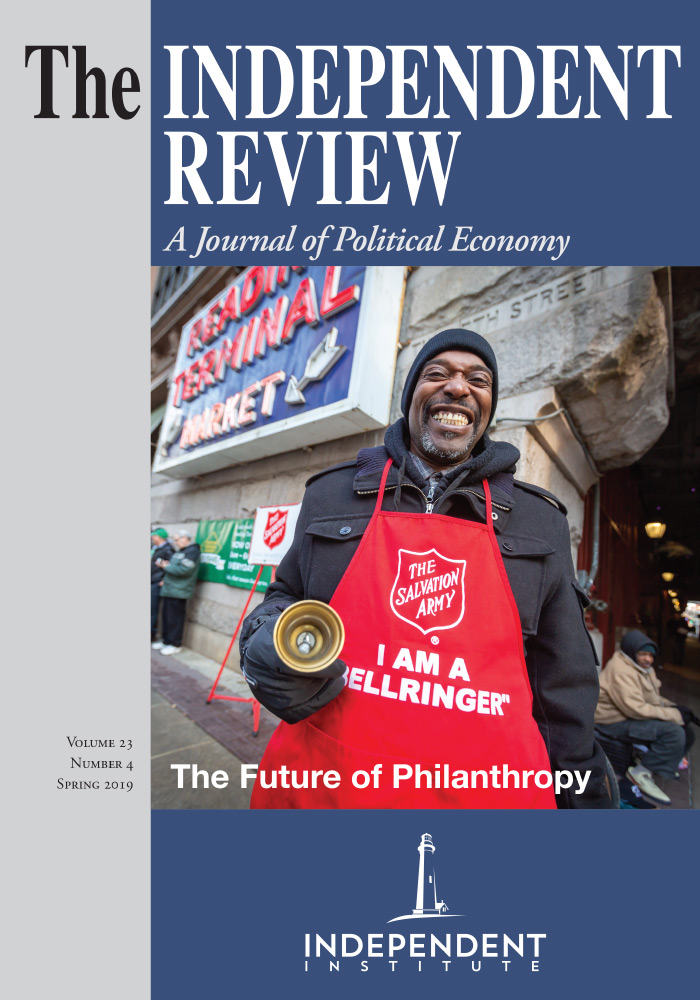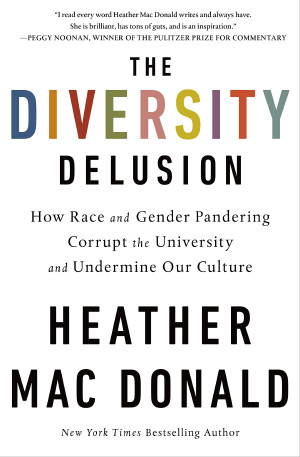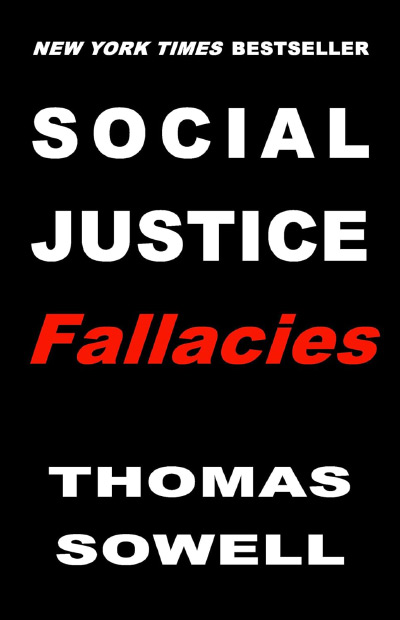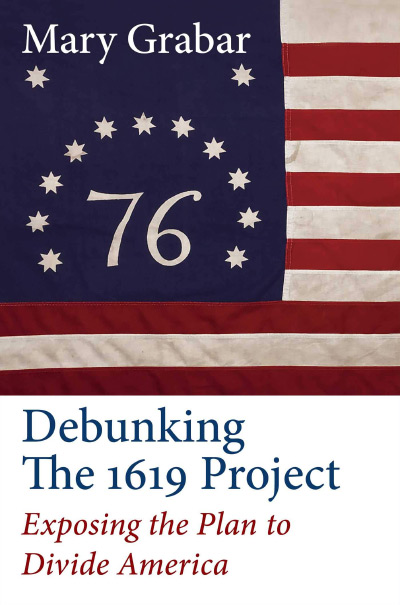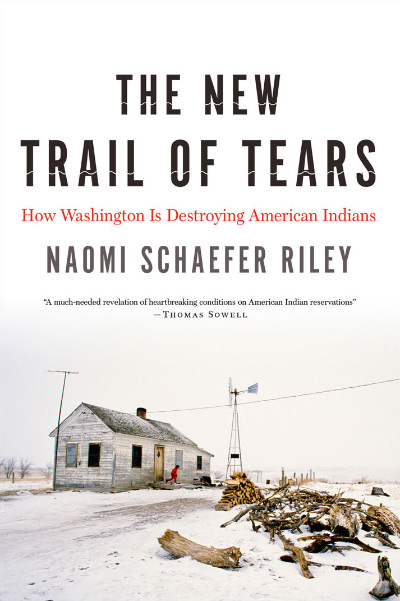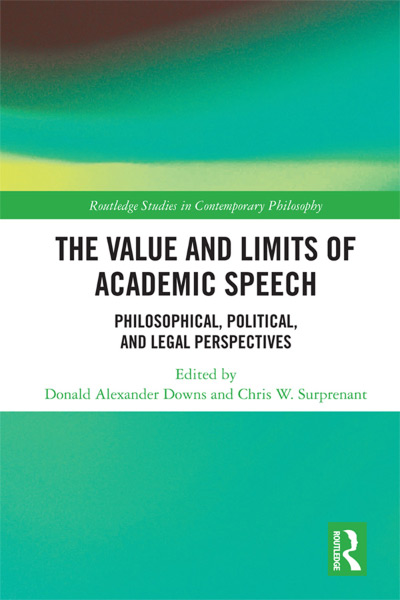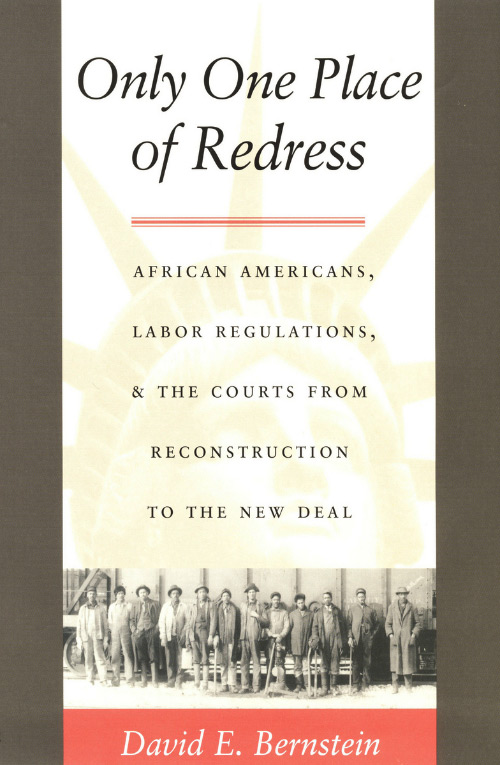Heather Mac Donald, the Thomas W. Smith Fellow at the Manhattan Institute, has written a disturbing book, The Diversity Delusion: How Race and Gender Pandering Corrupt the University and Undermine Our Culture. The destructive effects the campus diversity movement she chronicles is having on higher education are obviously disturbing, but so is the fact that so many people who claim to be teaching today’s students critical thinking skills are taking the absurdities of the movement seriously.
The bulk of the book is contained in three parts: Race, Gender, and Bureaucracy. The first part concerns what would seem to be well-intended attempts to improve education opportunities for minorities who have suffered from slavery and other historical indignities in America by reducing their admission requirements to colleges and universities. However, Mac Donald argues that over time these attempts, like those of so many political programs, have expanded to the point of doing more to harm than help the intended beneficiaries. Not surprisingly, this expansion continues to benefit campus professionals who justify yet further expansion for the purpose of increasing diversity. Interestingly, diversity advocates aren’t known for supporting public-school choice, favored by minority parents desperate to improve their children’s education.
In the second part on Gender, Mac Donald argues that universities have accepted and made greatly exaggerated claims about the danger of campus rape, partly because of threats made by the U.S. Department of Education if a university doesn’t take them seriously. The threats are no longer operative, but once the exaggerated rape claims were taken seriously, a familiar dynamic took place with interest groups coalescing in support of entrenching what Mac Donald calls “The Campus Rape Myth” (p. 117). The bureaucratic expansion evident in Parts 1 and 2, is considered in more detail in Part 3.
In Chapter 1 Mac Donald describes some of the harrowing experiences she and others have had on campuses from students threatening, and in some cases committing, violence against them to disrupt their speeches. Campus newspapers defended such acts, with one claiming the “attacks were ‘not acts of violence. They were acts of self-defense’” (p. 21-22). Mac Donald dismisses concern that elite universities such as Emory and Columbia are unsafe places for minorities, despite claims by Emory University’s president and a Columbia University sophomore who “announced on Facebook that his ‘health and life’ were threatened by a core curriculum course taught by a white professor” (p. 29). The problem, according to Mac Donald, is a “world view that sees Western culture as endemically racist and sexist [with the] overriding goal of the educational establishment [being] to teach young people within the ever-growing list of official victim classifications to view themselves as existentially oppressed” (p. 29).
Mac Donald considers the contempt intellectuals have for voters who dare to vote against diversity in Chapter 2. In 1996, 54 percent of California voters favored Proposition 209 which required cutting the use of racial quotas by California’s government. While some state agencies reduced such quotas, Mac Donald states “California’s university system is a different matter entirely . . . through fiendishly clever compliance with the letter of the law, while riding roughshod over its spirit. In doing so, university officials have revealed a fatalism about the low academic achievement of blacks and Hispanics that they would decry as rankest bigotry in a 1950s Southerner” (p. 37). I skip the examples Mac Donald gives of the resulting gaps in the academic qualifications required for admission by black applicants to the University of California compared with what is required by white and Asian applicants. These gaps are jolting even to those who have seen them before. But even more troubling are studies of law school admissions showing that admitting black students with GPAs and LSAT scores lower than their nonblack peers reduced their chances of graduating and passing the bar compared to blacks who attended law schools with students with similar scores (p. 48).
Chapter 3, “Affirmative Disaster,” presents more empirical evidence showing that racial preferences harm rather than benefit minority students in other academic disciplines. One study “suggests that admitting aspiring minority scientists to schools where they are less prepared than their peers is counterproductive” (p. 54). The study finds that “more than 76 percent of black male freshmen at Duke intended to major in the hard sciences or economics, higher even than the percentage of white male freshmen who anticipated such majors. But more than half of those would-be black science majors switched track in the course of their studies, while only 8 percent of the white males did” (p. 54). This attrition rate was explained entirely by levels of academic qualification. Black students, humanity professors, and those in the diversity bureaucracies often dismiss such studies as “personal assaults” and justification for hiring “more black faculty and administrators and for more funding of black-themed programs” (p. 55). Some have asserted that “the intellectual demands of humanities and science majors are indistinguishable” (p. 56). That is hard to reconcile with the fact that “Duke seniors in the hard sciences have lower grades than freshmen in the humanities and social sciences, even though the SATs of science majors are, on average, higher than those of humanities majors” (p. 56, emphasis in original).
Chapter 4, “The Microaggression Farce,” gives examples of the dangers professors with years of successful teaching and good rapport with students face from innocently committing the most micro of microaggressions. Students also fall victim to the microaggression minefield. The title of Chapter 5 asks the question “Are We All Unconscious Racists?” According to “implicit-bias researchers,” the answer is effectively yes, and the problem “lies deep in our brains, outside the reach of conscious thought” (p. 87). In 1998, two social psychologists introduced what they called the Implicit Association Test, which involves showing people pictures of blacks “or of women, the elderly, the disabled, and other purportedly disfavored groups” (p. 88) and asking them to hit a key indicating either good or bad. If a subject takes longer to hit good for blacks than to hit good for whites the IAT deems him “a bearer of implicit bias” and the longer he takes the more biased he is, with incriminating differences being measured in milliseconds (p. 88). Diversity trainers have seized on the IAT to argue that intention was not necessary to building a compelling legal case against racial discrimination. Jerry Kang, a UCLA law professor in the critical race studies program, and currently vice chancellor for equity, diversity and inclusion, argues that the new scientific knowledge provided by IAT means that if “we look only for conscious intent, we will ‘necessarily be blind to a whole bunch of real harm that is painful and consequential’” (p. 90). Mac Donald asked Kang’s special assistant if he or Kang were “aware of faculty candidates for hire or promotion at UCLA or elsewhere who were overlooked because of implicit bias?” (p. 96). The question was ignored. She asked several other diversity professionals similar questions and never received a straight answer, and often no answer at all.
The “campus rape industry’s” justification for existence and growth is that “one fifth to one quarter of all college girls will be raped or be the targets of attempted rape by the end of their college years (completed rapes outnumbering attempted rapes by a ratio of three to two)” (pp. 117-118). Mac Donald is skeptical. In Chapter 6, “The Campus Rape Myth,” she points out that “[n]o crime, much less one as serious as rape, has a victimization rate of 20 percent or 25 percent, even over many years” (p. 118). If true, this rate of rapes implies that “every year, hundreds of thousands of young women graduate who have suffered the most terrifying assault, short of murder, that a woman can experience (pp. 118-19). She wonders why “mothers are deliberately packing off their daughters to a hellhole of sexual predation” (p. 119).
In 2011, the U.S. Department of Education sent a letter to every college and university in the country warning them to reduce the standard of evidence to find an accused rapist guilty or lose federal funding. The response was “adding even flimsier categories of sexual impropriety [by males]; eliminating the greatest of all Anglo-Saxon truth-finding mechanisms—the right to cross examination; and doing everything they could to encourage accusations” (pp. 123-24). Some universities counselled unconditionally believing sexual assault charges, with the claim that “only 2 percent of reported rapes are false reports” (p. 124). One wonders about this claim, given the difficulty of determining the truth of many of the reports.
Mac Donald blames both sexes for irresponsible sexual behavior when writing:
Students in the 1960s demanded that college administrators stop setting rules for fraternization. . . . ‘If we want to have members of the opposite sex in our room any hour of the day or night, that’s our right.’ The colleges meekly complied and opened a Pandora’s box of boorish behavior that gets cruder each year. Do the boys, riding the testosterone wave, act thuggishly toward the girls? Yes! Do the girls try to match their insensitivity? Indisputably (p. 125).
Girls may try to match male insensitivity, but they are more likely to experience remorse after a “booze fueled hookup” (p. 125) than the boys, as indicated by several highly questionable rape charges Mac Donald discusses.
Some implications of this difference between the girls and the boys is presented in Chapter 7, “Neo-Victorianism on Campus.” By selectively imposing aspects of sexual Victorianism on campus to end the “epidemic” of campus rapes, campus feminists “are once again making males the guardians of female safety and are portraying females as fainting, helpless victims of the untrammeled victims of male libido” (p. 139). Feminists may not be demanding that an assistant dean chaperon “drunken couplings, but they have created the next best thing: the opportunity to replay every grope and caress before a tribunal of voyeuristic administrators” (p. 139). And lawyers are riding to the rescue to ensure that campus copulation is agreeable to both parties, preferably in writing and notarized every step of the way, with it possible to revoke agreement at any time.
There is more in Part 2 dealing with chapters on the fainting couch at Columbia, and the #MeToo movement’s impossible premise that readers will not want to miss.
Chapter 10, “Multicultural U,” gives a brief history of the University of California, beginning with the 1873 opening of the first campus in Berkeley. Until recently the UC system has been “an engine for economic growth and a source human progress” (p. 172). In the 1960s, UC’s president, Clark Kerr, observed “that Berkeley had split into two parts:” Berkeley One and Berkeley Two. The first remained an “important academic institution” and the second “was as connected to the city’s left-wing political class . . . as it was to the traditional academic life of the campus” (p. 173). At least there were a few points of overlap between the two. Today, we can talk about UC One and UC Two, with UC One remaining a serious university system, particularly in the sciences, but with UC Two “a profoundly unserious institution dedicated to the all-consuming crusade against phantom racism and sexism” (pp. 173-74). Furthermore, UC Two is now exerting a destructive influence on the educational mission of UC One.
In 2010, facing a $637 million cut in state funding and temporary reductions in faculty and staff, the UC system president at the time, Mark Yudof, “announced the formation of a presidential Advisory Council on Campus Climate, Culture and Inclusion [to be] supported by five working groups of faculty and administrators: the Faculty Diversity Working Group; the Diversity Structure Group; the Safety and Engagement Group; the Lesbian, Gay, Bisexual, and Transgender Group; and the Metrics and Assessment Group” (p. 177). Mac Donald gives figures of the surprisingly high cost of campus diversity bureaucracies throughout.
Maria Herrera Sobek, UC Santa Barbara’s associate vice chancellor for diversity, equity, and academic policy and a professor of Chicana and Chicano studies, “provided a window into how UC Two thinks about its mission” (p. 176). According to Sobek, if only white males are selected as finalists for a faculty position, the dean will suggest that some women be brought in and considered. She then said “[i]t turns out [the hiring committees] really like the candidates and hire them, even if they may not have looked good on paper.” Sobek notes, “they may be borderline, but they are all qualified.” “She added that diversity interventions get ‘more positive responses’ from humanities and social-science professors than from scientists” (p. 176). In Chapter 11, “How Identity Politics Is Harming the Sciences,” Mac Donald points out that federal funding agencies that fund research have begun to realize that, in her words, “scientific progress depends on diversity.” This clearly means hiring researchers who “may be borderline, but qualified” (pp. 190-91).
The diversity bureaucrats and underrepresented minorities, plus the professors and deans who have discovered it pays to be politically correct, are not satisfied with just hiring women. They must be women who stay within the “shrinking boundaries of acceptable thought on college campuses” (p. 201).
In Chapter 12, Mac Donald discusses how Amy Wax, a University of Pennsylvania law professor, found out just how narrow those boundaries have become. In 2017 Wax coauthored an op-ed with Larry Alexander, a University of San Diego law professor, advocating reviving bourgeois values such as hard work, civility, individual responsibility, honesty and concern for the future. Immediately upon publication in The Philadelphia Inquirer, Wax found out people on her campus and other campuses saw defending bourgeois values as “hate speech,” effectively an attack on “students of color” (pp. 201-02). The Penn graduate students’ union immediately attacked Wax and condemned the “presence of toxic racist, sexist, homophobic attitudes on campus” (p. 203).
“Nearly half the professors in University of Pennsylvania law school published an open letter condemning Wax and inviting students to report their experience of bias and stereotypes at Penn Law (read: Wax’s class)—a transparent effort to build a case for removing her from teaching first-year classes” (p. 206). The Dean of the law school, Ted Ruger, while “affirming that free speech was a ‘bedrock value’” suggested to Wax “that she take a year’s sabbatical and stop teaching her first-year civil-procedure class” in the hope that in her absence the controversy would fade away (pp. 205-06). But Wax refused the sabbatical and continued to argue that minorities benefit from incorporating bourgeois values in others and themselves and that aspiring minority lawyers are more successful when they go to law schools that best fit their educational qualifications. The controversy didn’t die down and Ruger’s suggestion “became a non-negotiable order” (p. 206).
Larry Alexander taught at what was considered a conservative Catholic university, but he was soon repudiated by his Dean who then “promised more classes, speakers, and workshops on racism” while ignoring why advocating bourgeois values was racist (pp. 206-07).
Mac Donald ends The Diversity Illusion with Part 4, “The Purpose of the University,” containing four short chapters that are well worth reading even if you disagree with her views. Let me end, however, with two points. First, if you disagree with Mac Donald’s ideas on education, she will not accuse you of being racist, sexist, or homophobic. Indeed, she would appreciate suggestions on the most effective way to allow colleges and universities to respond to diverse educational preferences and approaches.
Second, the campus diversity bureaucracies are not about achieving diversity in education. They are motivated by the desire to shame people into going along with their narrow boundaries on the acceptable racial, sexual, and ideological mix of students and teachers. I believe that a minority of students and faculty (except for those in some of the humanities or in courses with names ending in “studies”) genuinely agree with the policy recommendations of the campus diversity enthusiasts. But if they believe most professors and students agree, they will be reluctant to publicly speak out about obvious problems with those recommendations. Think of the emperor leading the parade without any clothes.
Mac Donald should be congratulated for calling out clearly that the campus diversity movement is wearing no clothes.
| Other Independent Review articles by Dwight R. Lee | ||
| Summer 2023 | Fiscal Recklessness, Path Dependence, and Expressive Voting | |
| Summer 2019 | The Fifth Risk: Undoing Democracy | |
| Spring 2015 | Making the Case against “Price Gouging” Laws: A Challenge and an Opportunity | |
| [View All (12)] | ||

